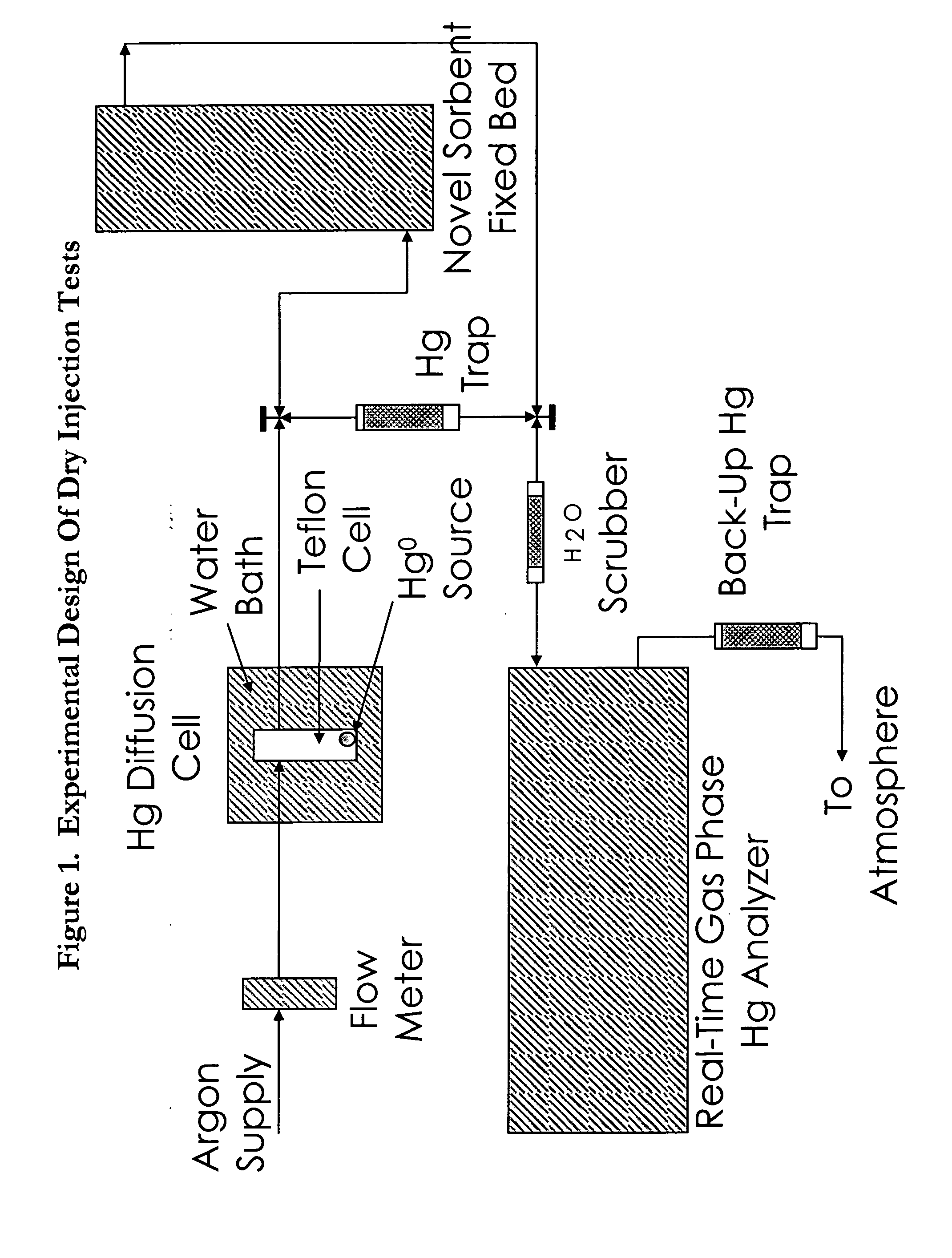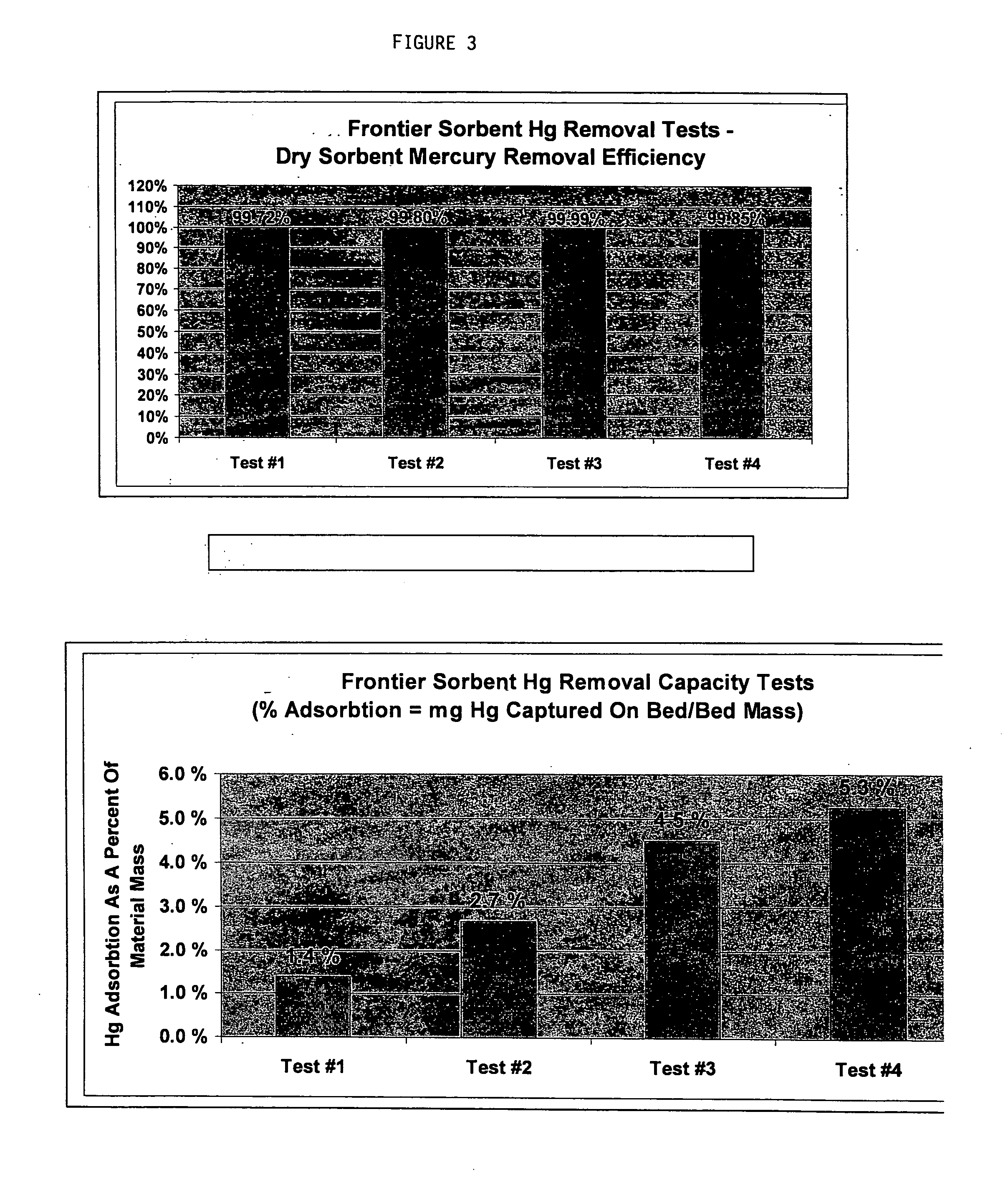Removal of volatile metals from gas by solid sorbent capture
a technology of solid sorbent and volatile metals, which is applied in the direction of separation process, dispersed particle separation, chemistry apparatus and processes, etc., can solve the problems of mass mercury discharge, inability to produce a viable process for the removal of elemental gaseous mercury from coal prior to combustion, and inability to remove elemental gaseous mercury water solubl
- Summary
- Abstract
- Description
- Claims
- Application Information
AI Technical Summary
Benefits of technology
Problems solved by technology
Method used
Image
Examples
Embodiment Construction
[0023] The present invention is directed to a new and improved method for removing mercury from gas. The method consists of adding a halogenated oxide compound to a solid substrate, where the substrate in turn is injected into and put in contact with a gas via a fixed bed or more commonly via carbon injection system and then captured on an existing particulate control system. Not bound by theory, it is believed that the halogenated oxide impregnated substrate adsorbs and absorbs both oxidized and elemental mercury from the gas phase onto the subject material, where the subject material is then in turn removed from the gas phase by an existing, retrofit / modified or new particulate control system including but not limited to a baghouse, cold-side electrostatic precipitator, hot-side electrostatic precipitator, or other such particulate control system, existing or not.
[0024] The postulated mechanism for the capture of both elemental and oxidized gaseous mercury by the invention is via...
PUM
| Property | Measurement | Unit |
|---|---|---|
| Temperature | aaaaa | aaaaa |
| Temperature | aaaaa | aaaaa |
| Fraction | aaaaa | aaaaa |
Abstract
Description
Claims
Application Information
 Login to View More
Login to View More - Generate Ideas
- Intellectual Property
- Life Sciences
- Materials
- Tech Scout
- Unparalleled Data Quality
- Higher Quality Content
- 60% Fewer Hallucinations
Browse by: Latest US Patents, China's latest patents, Technical Efficacy Thesaurus, Application Domain, Technology Topic, Popular Technical Reports.
© 2025 PatSnap. All rights reserved.Legal|Privacy policy|Modern Slavery Act Transparency Statement|Sitemap|About US| Contact US: help@patsnap.com



